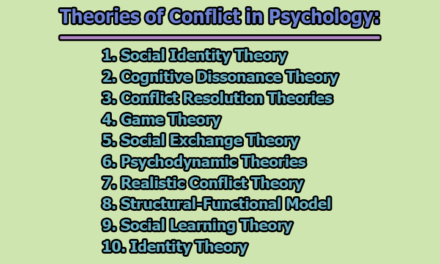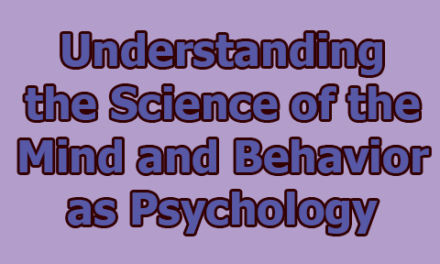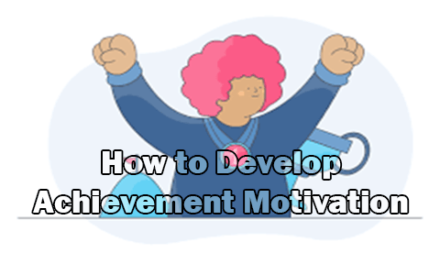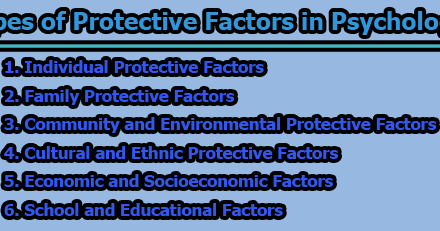6 Science-Backed Techniques for Training Emotional Intelligence:
Emotional intelligence is not simply a personality trait that people are born with. It is a skill set that can be intentionally strengthened and refined through practice. Research has shown that structured, evidence-based methods can meaningfully enhance key areas of emotional intelligence such as self-awareness, self-regulation, empathy, and social communication (Lynn, 2013). In recent years, professionals in therapy, coaching, and education have been encouraged by findings from psychology, neuroscience, and educational research. These studies demonstrate that carefully designed interventions can produce measurable improvements in emotional intelligence, giving people practical ways to regulate emotions and improve their interactions with others (Coronado-Maldonado & Benítez-Márquez, 2023; Gilar-Corbi et al., 2019). What follows are six strategies supported by scientific evidence that are commonly used in emotional intelligence training. When practiced with consistency, these techniques provide a structured and reliable framework for growth, allowing individuals to transform how they think, feel, connect, and lead. In the rest of this article, we will explore 6 science-backed techniques for training emotional intelligence.
1. Emotion Labeling and Affective Journaling: One of the most effective ways to strengthen emotional intelligence is to help individuals learn how to name and describe their emotions as they occur. Research has shown that when people put words to their feelings, they immediately gain a sense of clarity and awareness that reduces emotional confusion and enhances self-regulation (Torre & Lieberman, 2018). Instead of experiencing emotions in a vague or overwhelming way, labeling gives structure to those feelings and creates space between the person and the reaction.
When emotion labeling is paired with affective journaling, the benefits increase significantly. Writing about emotions allows people to reflect on what they are experiencing, recognize patterns over time, and explore the deeper meaning of their reactions. Journaling also strengthens neural pathways associated with emotional recognition and control, making it easier to understand and manage one’s feelings in the future. Over time, this process creates a greater sense of emotional precision and personal insight, which is a foundation for all other aspects of emotional intelligence.
2. Mindfulness-Based Attention Exercises: Mindfulness has become one of the most widely researched and effective methods for building emotional regulation. The practice involves developing a deep awareness of the present moment without judgment. Simple exercises such as mindful breathing, guided meditation, or body scans help people notice their internal states without being carried away by them (Sharma et al., 2025).
From a psychological and neurological perspective, mindfulness training strengthens the brain regions responsible for attention and emotional control. People who practice mindfulness regularly become more capable of observing emotional triggers with calm awareness instead of reacting automatically. For example, rather than snapping in frustration during a stressful interaction, mindfulness provides the ability to pause, breathe, and respond more thoughtfully. Over time, this practice creates a sense of balance and emotional steadiness that not only benefits personal well-being but also improves relationships, communication, and leadership.
3. Perspective-Taking and Role-Play: Another essential skill in emotional intelligence is the ability to understand the emotions and perspectives of others. This is often called perspective-taking, and it has been shown to be a powerful way of enhancing empathy and reducing self-centered thinking (Mortillaro & Schlegel, 2023). By learning to step outside of one’s own viewpoint and imagine how another person might feel, individuals become better at building trust, compassion, and connection.
Structured role-play is a practical tool for developing this skill. In role-play activities, individuals are encouraged to act out scenarios where they must imagine the emotional experience of someone else. For instance, a person may take on the role of a colleague who feels excluded in a meeting, or a partner who feels unheard in a conversation. Experiencing the situation from the other perspective helps participants to grasp the emotional realities of others in a more tangible way. This process often leads to stronger empathy, better conflict resolution, and more meaningful interpersonal relationships. For many clients, perspective-taking exercises are eye-opening experiences that change how they interact with others in daily life.
4. Cognitive Reappraisal Exercises: Cognitive reappraisal is a skill that teaches individuals to reinterpret difficult or negative events in a more constructive or balanced way. Instead of allowing a challenging situation to be seen as entirely negative, reappraisal encourages people to look for alternative meanings that reduce distress. For example, a setback at work might be reframed as an opportunity to learn new skills or discover areas for growth. This shift in perspective helps people manage their emotions more effectively and respond with resilience rather than discouragement (David, 2016).
The strength of cognitive reappraisal lies in its ability to change both the emotional and physiological response to stress. People who practice this skill often experience reduced intensity in their negative emotions, along with a greater sense of control over their reactions. Because of its effectiveness, cognitive reappraisal is widely used in cognitive-behavioral therapy and emotion-focused coaching. Over time, this practice not only supports emotional balance but also helps individuals build healthier long-term patterns of thinking.
5. Socratic Questioning and Emotional Belief Work: Another important area of emotional intelligence involves addressing the beliefs people hold about emotions. Often, individuals carry unhelpful or rigid emotional beliefs, such as the idea that showing sadness is a sign of weakness. Socratic questioning is a reflective technique that helps challenge these assumptions. It involves asking thoughtful, open-ended questions that guide individuals to examine and rethink their emotional beliefs.
For example, a therapist might ask, “When you were younger, did you ever need someone to acknowledge your emotions without judgment? What did that experience feel like?” Such questions encourage people to explore their past experiences and uncover hidden assumptions that shape their emotional responses today. Research has shown that when people shift these underlying schemas, they become more emotionally flexible and open, which leads to long-term growth in emotional intelligence (Mortillaro & Schlegel, 2023). This process can be deeply healing, as it allows clients to replace unhelpful beliefs with more compassionate and adaptive ways of relating to themselves and others.
6. The “If-Then” Emotion Regulation Plan: One of the most practical and structured methods for improving emotional control is the use of implementation intentions, often described as the “if-then” technique. This involves creating clear plans for how to respond when certain emotional triggers appear. For instance, a client might prepare by saying, “If I feel anxious during the meeting, then I will take three deep breaths before speaking.” By rehearsing these responses in advance, individuals strengthen their ability to regulate emotions automatically when stressful situations occur (Chen, 2020).
The effectiveness of this method depends on making sure the “if-then” statements are realistic, healthy, and easy to apply. When done correctly, these plans reduce impulsivity and increase confidence in handling challenging emotions. Over time, this practice becomes second nature, giving individuals reliable strategies to draw on whenever they face stress or discomfort. The result is not only improved emotional regulation but also a greater sense of preparedness and resilience in everyday life.
In conclusion, emotional intelligence is not fixed at birth. It can be nurtured and developed through structured, science-based practices. Techniques such as emotion labeling, mindfulness, perspective-taking, cognitive reappraisal, Socratic questioning, and implementation planning all provide clear pathways toward growth. Practiced consistently, these strategies enhance self-awareness, empathy, and self-regulation, ultimately transforming how people relate to themselves and others. For therapists, coaches, and educators, they offer a practical and research-supported toolkit to help clients and students build emotional strength and resilience in meaningful ways.
Frequently Asked Questions (FAQs):
Can emotional intelligence really be improved with training?
Yes, research consistently shows that emotional intelligence is not fixed and can be strengthened through structured practice. Techniques such as emotion labeling, mindfulness, and cognitive reappraisal have been proven to enhance self-awareness, empathy, and emotional regulation over time. Like any other skill, it requires consistency, reflection, and guidance to see lasting results.
How long does it take to notice improvements in emotional intelligence?
The timeline varies from person to person, but many individuals begin noticing changes within a few weeks of regular practice. For example, people often report feeling calmer after practicing mindfulness exercises for just a short period. However, deeper improvements in self-regulation, empathy, and belief systems usually develop over several months of steady practice.
Do these techniques work better in therapy or can they be practiced alone?
Both options are possible. Many people benefit from practicing on their own with tools such as journaling, mindfulness apps, or guided exercises. At the same time, working with a therapist, coach, or educator can provide personalized feedback, accountability, and deeper exploration of emotional beliefs. A combination of independent practice and professional support is often the most effective.
Which technique is the most effective for beginners?
There is no single technique that works for everyone, but many beginners find mindfulness or emotion labeling to be the most accessible starting points. These practices provide immediate insights into emotional states and create a foundation for other techniques. Over time, individuals can expand into more advanced practices like Socratic questioning or the use of “if-then” emotion regulation plans.
Can these strategies help in professional settings such as leadership or teamwork?
Absolutely. Emotional intelligence is a critical skill in professional environments because it shapes communication, conflict resolution, and collaboration. Techniques like perspective-taking and cognitive reappraisal can help leaders manage teams with empathy and fairness, while mindfulness and “if-then” planning can reduce stress and improve decision-making under pressure.
Are these techniques suitable for children and adolescents?
Yes, many of these practices can be adapted for younger individuals. Journaling exercises, role-play, and simple mindfulness activities are often very effective with children and teenagers. By introducing these skills early, educators and parents can help young people develop emotional awareness and resilience that will benefit them throughout life.
References:
- Chen, S., Yu, K., Yang, J., & Yuan, J. (2020). Automatic reappraisal-based implementation intention produces early and sustainable emotion regulation effects: Event-related potential evidence. Frontiers in Behavioral Neuroscience, 14, 89. https://doi.org/10.3389/fnbeh.2020.00089
- David, S. (2016). Emotional agility: Get unstuck, embrace change, and thrive in work and life. Avery.
- Mortillaro, M., & Schlegel, K. (2023). Embracing the emotion in emotional intelligence measurement: Insights from emotion theory and research. Journal of Intelligence, 11(11), 210. https://doi.org/10.3390/jintelligence11110210
- Sharma, N., Agrawal, M., Rushi, Ayyub, S., & Rai, D. (2025). Mindfulness-based interventions for emotional dysregulation in adolescents: A systematic review. Annals of Neurosciences, 0(0). https://doi.org/10.1177/09727531251355311
- Torre, J. B., & Lieberman, M. D. (2018). Putting feelings into words: Affect labeling as implicit emotion regulation. Emotion Review, 10(2), 116–124. https://doi.org/10.1177/1754073917742706

Library Lecturer at Nurul Amin Degree College










